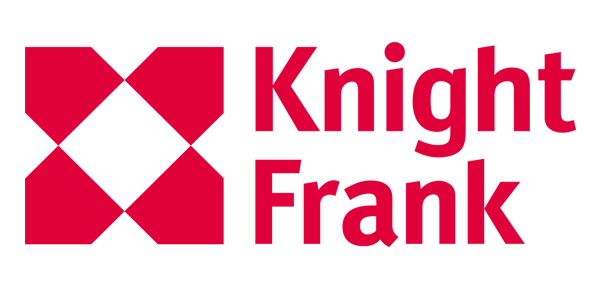Supporting the profitable expansion of major retailers
The independent real-estate consultancy Knight Frank is using Esri’s ArcGIS platform to help leading retail organisations find the most advantageous sites for new stores across the UK. By performing geospatial analysis on a wide range of factors, the firm can guide its clients quickly towards precisely those locations that are most likely to maximise profitability and reduce risk.
Knight Frank provides in-depth, location-specific analysis so retailers can make better informed decisions
Clients have all the information they need to choose locations that will maximise their profitability
Retailers can react quickly to secure the most advantageous sites in UK high streets and shopping centres
The Challenge
Named ‘Global Real Estate Adviser of the Year 2016’ in the annual Estates Gazette Awards, Knight Frank is one of the world’s leading independent real-estate consultancies, with 411 offices in 59 countries and 14,000 employees. More than 50% of Knight Frank’s business relates to commercial property, so it is vitally important for the company to be able to provide highly professional and value-added services for commercial clients.
From experience, Knight Frank knew that many commercial organisations have an unstructured approach to choosing locations for their business premises or retail outlets. Businesses often have a choice of potential sites throughout the UK and around the world for new properties, but, for a range of reasons, are not able to adopt a standard approach that considers the suitability, and likely profitability, of potential sites in a comparable way. As a result, businesses cannot quickly hone in on the most suitable locations, which increases costs and accentuates business risks.
To address this issue, Knight Frank’s Commercial Research Department, based at the company’s UK headquarters, set out to develop a structured, evidence-led approach to qualifying potential new business locations. It wanted to make relevant, meaningful, client-specific information available to its internal teams, enabling them to deliver superior property services for commercial clients, which include food retailers, leisure stores and chains of coffee shops.
With the evidence we provide from ArcGIS, our clients can have greater confidence in their decisions and can pick the locations that will offer the least risk and greatest potential profitability
James Nolan – Senior Geospatial Analyst, Commercial Research Department, Knight Frank
The Solution
Knight Frank uses Esri’s ArcGIS platform for its location analysis services primarily due to its flexibility, as James Nolan, Senior Geospatial Analyst at Knight Frank, explains. “For the breadth of analysis that we wanted to do and the diverse range of clients that we work with, we needed a highly flexible resource,” he says. “ArcGIS has advanced geospatial tools and allows us to input data from a variety of sources. It’s a very powerful, very flexible GIS.”
The firm now uses Esri’s ArcGIS Desktop and hosted services from Esri UK to:
- Create highly targeted, detailed and client-specific databases, including data such as demographics, existing business premises and competitor locations
- Perform geospatial analysis to assess the proximity of target customers and create catchment areas
- Generate travel isochrones which are added as layers of information on a multi-dimensional map
- Include research into changing consumer and retail trends, such as the spending patterns of millennials and the growth of the discount food retail sector
- Use Esri’s viewing software, Arc Scene, to interpret the distance and time taken to travel between sites
- Hone the results by adding or removing criteria, to precisely identify the best business locations
ArcGIS puts Knight Frank in a stronger position to advise its clients quickly about the suitability of available sites
James Nolan – Senior Geospatial Analyst, Commercial Research Department, Knight Frank
Benefits
Higher quality, evidence-based property services
Through its use of ArcGIS, Knight Frank is now able to pinpoint the optimum business locations for specific organisations and thereby offer an enhanced quality of service for its commercial clients. It can combine research into the consumer behaviour of millennials, or the activities of competitors, with detailed population statistics to identify up-to-the-minute opportunities for retailers and then present thorough, relevant analysis to help its clients make well-informed decisions about new retail ventures.
Reduced risk in multi-million pound investments
Critically, Knight Frank’s structured, GIS-led approach helps to reduce risk for clients, in what can be multi-million pound investment decisions. For instance, once a potential new location for an established retailer has been identified, Knight Frank can find an existing store with a similar demographic and geographic profile. If this comparable store is doing well financially, the client has some reassurance that the risk of business failure at the new location is low. “With the evidence we provide from ArcGIS, our clients can have greater confidence in their decisions and can pick the locations that will offer the least risk and greatest potential profitability,” Nolan says.
Faster time-to-market for commercial enterprises
Knight Frank is able to carry out almost all of its location analysis using ArcGIS, third-party intelligence and publically available data sets, before sending surveyors out into the field. This combination not only results in significant cost efficiencies, but also speeds up the location search process, allowing clients to secure the most advantageous sites ahead of their competition and reduce their time to market. “When retail units in popular shopping malls and key high streets become available, there can be strong competition from multiple retailers for that location,” Nolan explains. “ArcGIS puts Knight Frank in a stronger position to advise its clients quickly about the suitability of available sites.”



